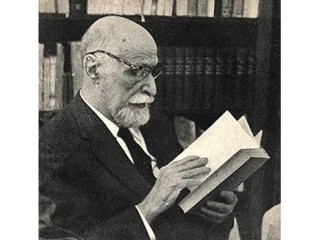
Juan Ramon Jimenez biography
Date of birth : 1881-12-24
Date of death : 1958-05-29
Birthplace : Moguer, Andalusia
Nationality : Spanish
Category : Famous Figures
Last modified : 2011-08-23
Credited as : Poet, symbolist,
The Spanish symbolist poet Juan Ramón Jimenez was one of his country's greatest writers. His influence on the succeeding generation of writers was profound.
Juan Ramón Jimenez was born in Moguer in Andalusia on Dec. 24, 1881. After early training in a Jesuit school, he was sent to study law in Seville; he chose, however, to study literature, especially romantic poets. In 1900 Jimenez went to Madrid, carrying an ample collection of his early poems, finally published under the delicate titles Ninfeas and Almas de violeta. At this time he suffered a mental breakdown, spending months in clinics in France and in Madrid. In spite of his condition, Jimenez helped to found and direct the literary journal Helios and continued to write poetry. His expressive titles indicate accurately the type of poetry he was writing: Arias tristes (1903), Jardines lejanos (1905), Pastorales (1905).
In 1905 Jimenez returned to Moguer and spent 6 tranquil years writing the same kind of poetry: Elejlas, Baladas de primavera, La soledad sonora. Essentially this poetry is impressionistic, with a stylized backdrop of nature in pastel colors (rose, white, mauve). The tone is generally one of languid melancholy; the form is elegant, aristocratic, and musical. Even at this stage, however, Jimenez's imagery is focused toward sublimation of human emotions. In his early maturity this tendency toward sublimation becomes pronounced, especially in the fine book Sonetos espirituales (1915).
In 1916 Jimenez went to the United States and married Zenobia Camprubi. On this trip the poet composed his important book in the symbolist manner, Diario de un poeta reciencasado, which is an elaborate projection of two basic symbols, the sea and the sky. Back in Madrid, in the following years Jimenez gradually withdrew from participation in the real world to concentrate upon his poetry. He created four major books: Eternidades (1917), Piedra y cielo (1918), Poesia (1923), and Belleza (1923). By this time he was writing a pure poetry of intellectual tone reduced to essential symbol and stripped of all anecdote and verbal music.
At the outbreak of the Spanish Civil War, Jimenez (never interested in politics) went again to the United States and began a late career (followed by many other exiles) of teaching and lecturing for brief periods. Although his poetic creation slackened somewhat in the 1930s, in the 1940s he enjoyed a final burst of inspiration. As a result of a boat trip to Argentina, Jimenez, again moved by the symbol of the sea, wrote what he considered his final major work, Dios deseado y deseante (1949). This book projects the resolution of themes Jimenez had been pursuing all his career. His first period was esthetic, his second intellectual; in his final period, a religious one, he expressed his neomystical union with his God both "desired and desiring." In all these periods the poet is seeking a perfection of his soul, what he calls a "unique, just and universal consciousness of beauty."
Jimenez also wrote significant prose in his long career. In 1917 he published Platero y yo (Platero and I), a poetic, melancholy, Franciscan book that has become a classic, especially for children. He also wrote Espanoles de tres mundos, short and sometimes biting portraits of his contemporaries.
In 1956, just at the time his beloved Zenobia lay dying, Jimenez received the Nobel Prize in literature for his lyrical poetry. He died in San Juan, Puerto Rico, on May 29, 1958.
















